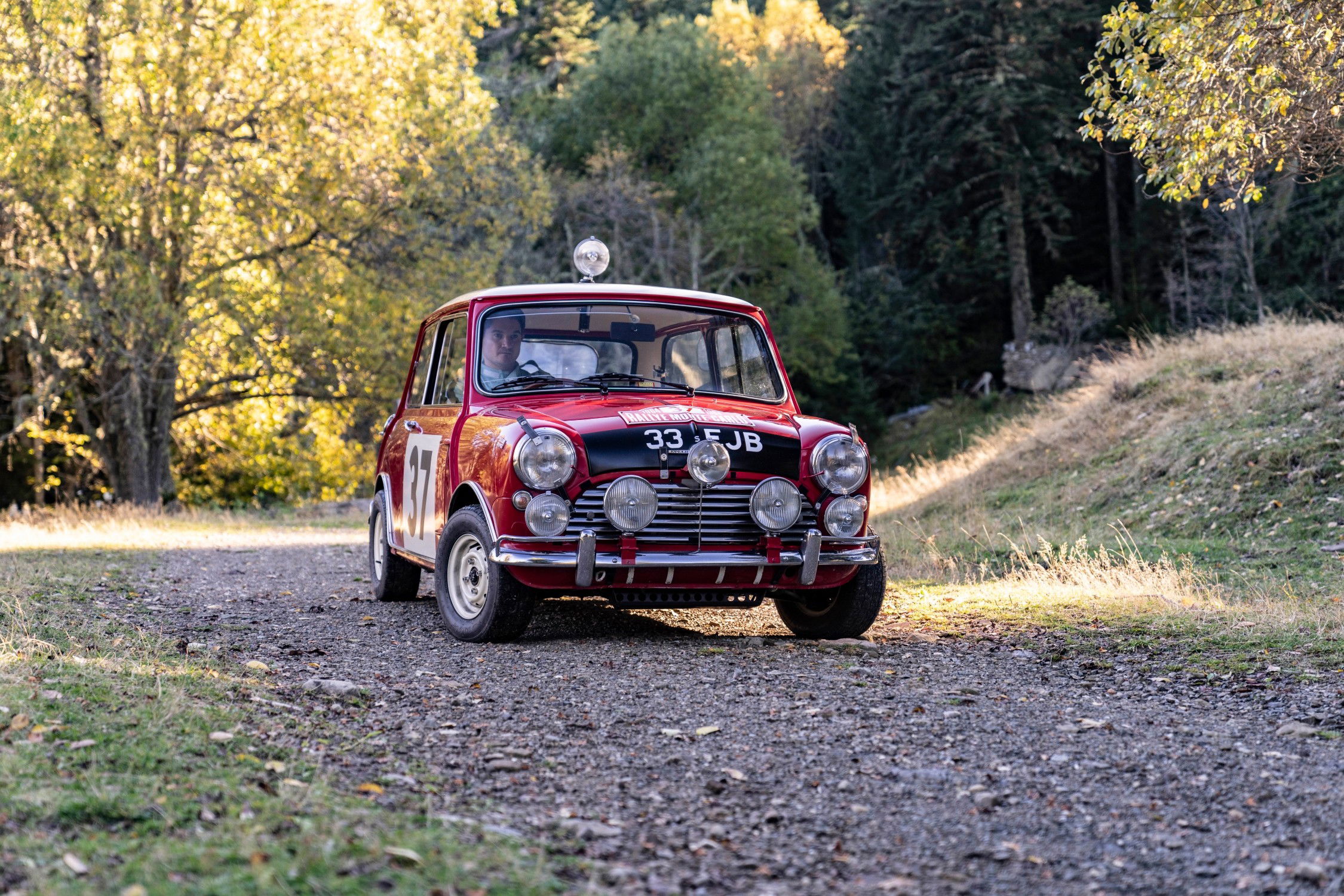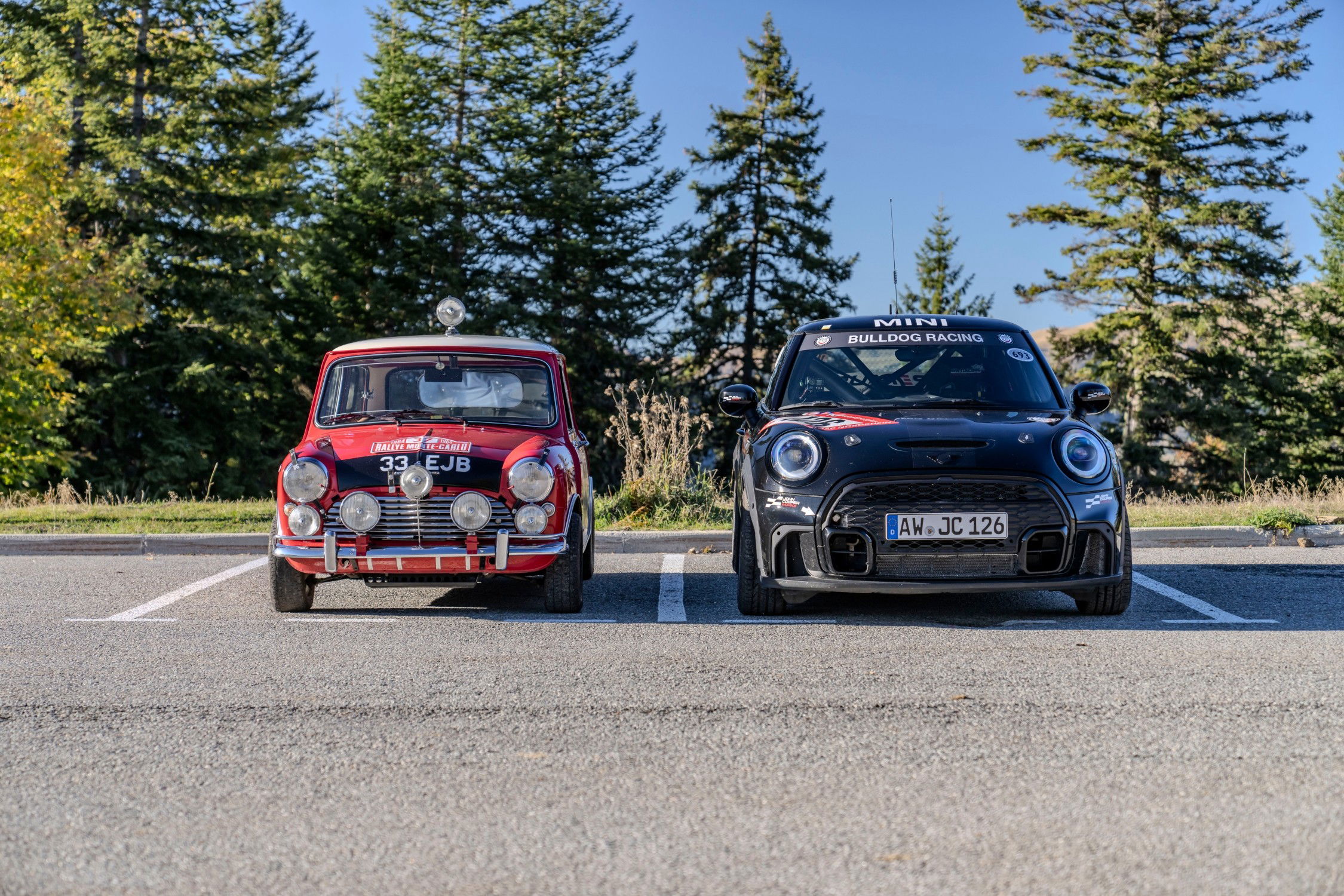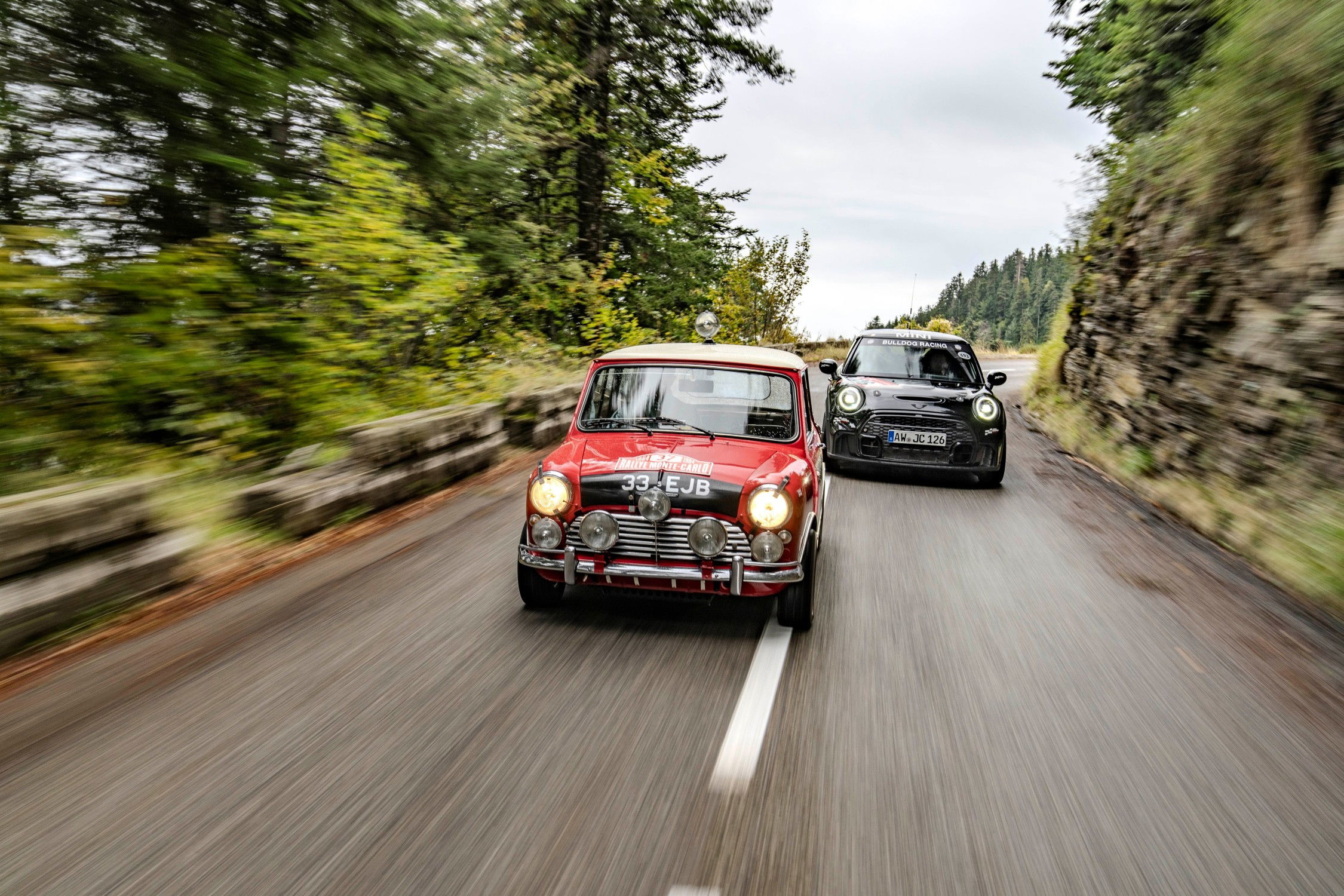Mini Cooper S: 60 Years of Motorsport Triumphs and Evolution into the Electric Era
- Mini Cooper S's 1964 triumph at the Monte Carlo Rally marked a turning point in motorsport, showcasing the synergy of technology, exceptional drivers, and innovative logistics.
- The classic Mini Cooper, born from collaboration with racing driver John Cooper, disrupted the rally scene with its agile design and notable victories.
- Paddy Hopkirk's precision in the challenging 1964 Monte Carlo Rally secured a surprising victory, transforming the underestimated underdog into a motorsport legend.
- The MINI legacy endures, with John Cooper Works models continuing the brand's outstanding performance tradition, from WRC participation to recent triumphs in the Dakar Rally.
Celebrating its 60th anniversary, the remarkable triumph of the Mini Cooper S at the Monte Carlo Rally in 1964, piloted by Irishman Patrick "Paddy" Hopkirk, marked a pivotal moment in international motorsport.
Far from mere coincidence, the victory underscored the synergy of modern technology, exceptional drivers, and innovative logistics standards. This success was no isolated event, as subsequent victories in the Monte Carlo Rally and numerous triumphs throughout the 1960s cemented the Mini Cooper S's legacy.
Stefanie Wurst, Head of MINI, reflects on Paddy Hopkirk's stunning triumph at the Monte Carlo rally, stating, "Paddy Hopkirk's victory in the Mini Cooper S in 1964 marked a turning point in the history of Mini, showcasing its dual prowess as both a charming city car and a formidable force in motorsport. This racing heritage continues to resonate in our models today, shaping the DNA of Mini."
See also: New 3-Cylinder 2024 MINI Countryman C: Everything We Know So Far
The Birth of the Classic Mini Cooper

In the late 1950s, traditional rally powerhouses like Austin Healey and Ford Falcon dominated the scene with their imposing vehicles that were ill-suited for everyday use.
Meanwhile, Alec Issigonis, commissioned by the British Motor Corporation (BMC), introduced the groundbreaking classic Mini in 1959, featuring a transverse engine and front-wheel drive—setting the standard for small cars. Enter John Cooper, a renowned racing driver and visionary designer.
Recognizing the sporting potential of the classic Mini, Cooper advocated for enhancements, deeming it a true race car. This collaboration birthed the underestimated underdog, a role embraced by MINI throughout its six-decade history.
The first Mini Cooper emerged in 1960, boasting 55 horsepower, a substantial improvement over the original 1959 Mini's 34 horsepower.
By 1961, the three-meter-long Mini Cooper disrupted the high-speed driving landscape as an affordable option for enthusiasts. On rally routes and tracks, the agile Mini Cooper with its ten-inch wheels consistently claimed victories.
Tailor-made for rally routes, the classic Mini Cooper's minimal body overhangs delivered unprecedented neutral driving behavior.
Weighing a modest 650 kilograms at the time, the Rallye Mini's power-to-weight ratio, combined with 55 horsepower, laid the foundation for the renowned go-kart feeling. In May 1962, the classic Mini earned its place on the winners' list at the International Tulip Rally, driven by Pat Moss. This triumph marked the beginning of a remarkable 62-year journey in motorsport for the iconic brand.
The year 1962 marked a pivotal moment for Mini as Stuart Turner, BMC sports director, strategically enlisted Finnish talents Timo Mäkinen and Rauno Aaltonen alongside Paddy Hopkirk. Mäkinen, known as the "Flying Finn," embraced a silent prowess, while Aaltonen, the multilingual rally professor, approached motorsports with scientific precision.
These Nordic speedsters, with a shared passion for aggressive acceleration, added unique dimensions to Mini's racing legacy. Mini's ascent continued with an unwavering commitment to excellence. Despite daunting challenges, the ingenious vehicle design and the trio of top-notch drivers laid the groundwork for success.
Stuart Turner's revolutionary logistics, including sending ice spies to special stages, set new standards for service organization. John Cooper's meticulous tuning of the combustion chamber volume pushed the Mini Cooper S to produce 90 horsepower, a remarkable feat within the 1100 class.
Visually modest, the Mini Cooper S retained the appearance of an everyday Mini with no sporty embellishments to write home about. With no tachometer, a plastic steering wheel, and minimalist seats, the car looked as simple as simplicity can get.
The utilitarian design, featuring a shelf instead of a dashboard and external body folds, exemplified an extreme economy of space and reflected the brand's innovative design approach.
Paddy Hopkirk's Iconic Victory: 1964 Monte Carlo Rally

Photo credit: Red Bull
Success in the 1960s Monte Carlo Rally required relentless effort. In 1963, Rauno Aaltonen secured his first class win, setting the stage for the unexpected overall victory in 1964. The competition, comprised of 277 cars, posed a formidable challenge.
Meticulous preparation and favorable weather conditions, with ample ice and snow, played to the classic Mini's strengths. Overnight, the underestimated underdog transformed into a crowd favorite and a motorsport legend, solidifying its place in history.
The pivotal moment for the Mini Cooper S arrived during the legendary "Night of the Long Knives," the penultimate stage of the 1964 Monte Carlo Rally.
Piloted by Paddy Hopkirk with starting number #37 and the iconic license plate 33 EJB, the Mini tackled the challenging Col de Turini in the French Maritime Alps—a course featuring 34 hairpin bends over 24 kilometers, covered in snow and ice at an altitude of 1,600 meters.
Hopkirk's precision and skill led him to finish just 17 seconds behind his powerful rival, Bo Ljungfeldt, in a Ford Falcon with a V8 engine. The classic Mini claimed the lead overall, propelled by the handicap formula compensating for differences in weight and performance. The triumph was secured in the final circuit race through the streets of Monte Carlo.
Back in the classic Mini's home country, the victory sparked enthusiastic celebrations. Hopkirk received a congratulatory telegram from the British government, and even the Beatles expressed their congratulations. "Now you're one of us, Paddy," read the autograph card from the Beatles, solidifying Hopkirk's status as a motorsport hero and the "fifth Beatle."
This victory set the stage for a winning streak in the Monte Carlo Rally. Timo Mäkinen secured a decisive win the following year, benefitting from the displacement expansion to 1275 cubic centimeters. Mäkinen's Mini Cooper S navigated through tons of snow and ice, dominating five of the six special stages on the final leg.
The Three Musketeers: Aaltonen, Mäkinen, and Hopkirk

Paddy Hopkirk poses with his #37 MINI Cooper - Photo credit: Car Magazine
In 1966, the Mini pilots achieved what seemed like the ultimate triumph, securing the top three positions. However, race management disqualified all three vehicles over alleged non-compliant lighting technology.
This incident only enhanced the legendary status of the classic Mini, solidifying Aaltonen, Mäkinen, and Hopkirk as the "Three Musketeers," leading to a surge in classic Mini sales. Despite Vic Elford winning in a Porsche 911 in 1968, Aaltonen maintained the classic Mini's honor with a third-place finish.
The 1970s marked the end of an era, as financial difficulties led to the closure of the Leyland Group, concluding a magnificent chapter in motorsport history. In July 1971, the last Mini Cooper S rolled off the assembly line, marking the end of a remarkable era in motorsports. The early motorsport triumphs profoundly influenced the MINI brand, extending their legacy into the new millennium.
The timeless principles of front-wheel drive, transverse engine placement, short body overhangs, and nimble handling, originating from the classic Mini, were meticulously transferred to the new MINI introduced in 2001.
Evolving into the premium segment, this iconic design philosophy persisted in new models such as the MINI Clubman, MINI Convertible, and MINI Countryman, each unmistakably embodying the MINI experience.
Evolution and Endurance: MINI's Motorsport Legacy

Few vehicle concepts have endured as long as the MINI, gaining unparalleled popularity and diversifying into a wide array of variants. More than a mode of transportation, driving a MINI has always been an expression of personal style.
The MINI, a classic in automotive history, transcends generations and class boundaries to become a timeless and iconic vehicle. Under the ownership of the BMW Group, MINI's commitment to motorsport and the legacy of John Cooper persist.
From 2011 to 2012, the John Cooper Works WRC continued the brand’s motorsport history by participating in selected rounds of the FIA World Rally Championship (WRC). In 2012, the MINI ALL4 Racing, crafted for marathon rallies, took on the ultimate endurance challenge—the Dakar Rally.
The MINI ALL4 Racing secured four consecutive victories from 2012 to 2015, adding two more triumphs in 2020 and 2021. The motorsport world, once again, underestimated the capabilities of the compact powerhouse that had consistently achieved remarkable feats.
The brand name John Cooper Works remains synonymous with outstanding performance, both on the racetrack and the road. Dating back to the 1970s, John Cooper Works tuning kits for series vehicles gained popularity, emphasizing crucial virtues both visually and technically.
This tradition endures in the new MINI, featuring extreme athletes under the John Cooper Works designation, boasting outputs of up to 225 kW/306 hp. The MINI legacy, marked by innovation and triumphs, continues to captivate enthusiasts across the globe.
Racing into the Future: MINI's Electric Evolution

Carrying on the tradition, private motorsport teams are keeping the passion for racing alive. In 2021, the Bulldog Racing project emerged in Nürburg, dedicated to classic endurance racing.
The MINI John Cooper Works, representing Bulldog Racing, made its debut at the 24-hour race at the Nürburgring in 2022, defying expectations for 40 laps before being forced out of the race due to an accident.
Despite the setback, the tenacious effort captivated fans, turning the red speedster into a crowd favorite. May 2023 marked a triumphant moment for the Bulldog Racing Team as it secured the highly acclaimed second place in its class at the 24-hour race at the Nürburgring with the MINI John Cooper Works 1to6 Edition.
This near-production version, featuring a manual transmission and embodying classic MINI virtues such as low weight and emotional appeal, showcased the MINI’s enduring spirit. The team is set to continue its journey in the "Green Hell" in 2024 with another MINI John Cooper Works racecar.
Looking ahead, the MINI brand is embracing a future that is not only almost silent but also locally emission-free and remarkably powerful.
The MINI Cooper and MINI Countryman have already paved the way for this shift, with the upcoming MINI Aceman, a new model positioned between the two, set to debut in the first half of 2024.
The electrification wave is also reaching the MINI John Cooper Works models, marking a new chapter in the brand's rich history that spans over 60 years. The MINI experience is evolving, promising a thrilling blend of innovation, performance, and sustainability.